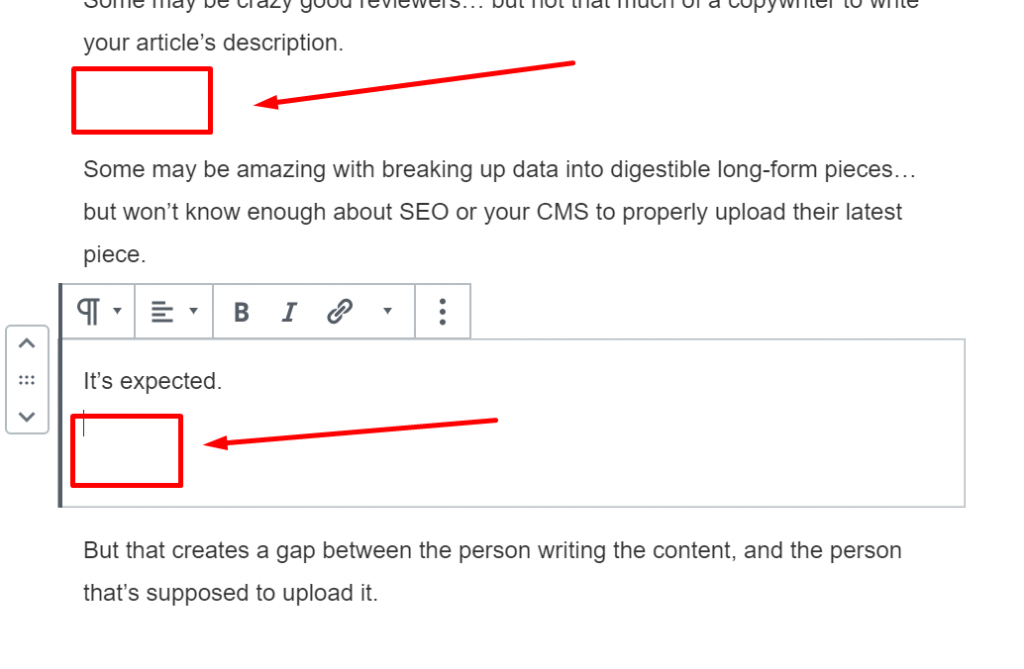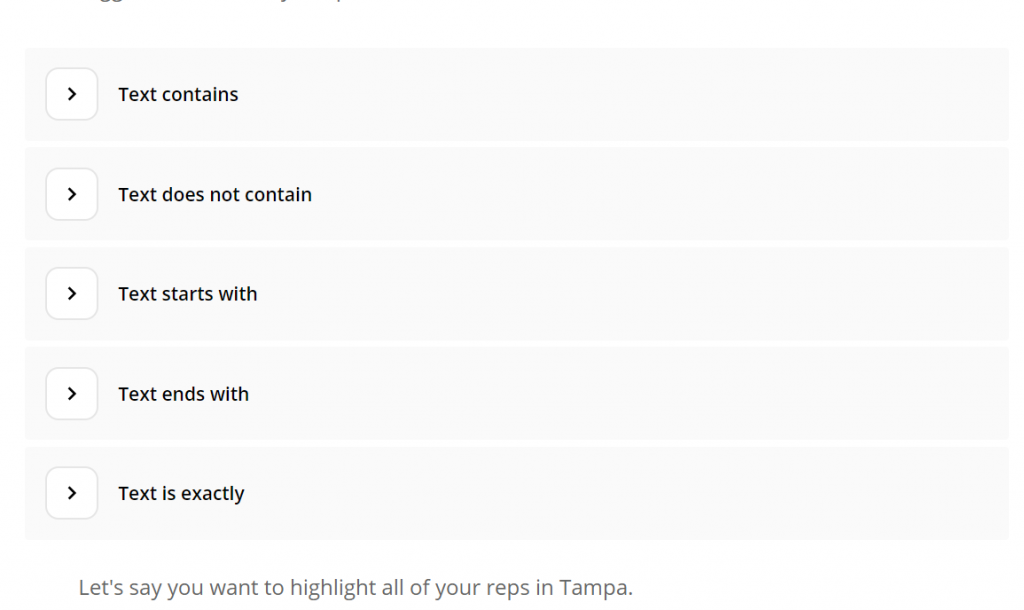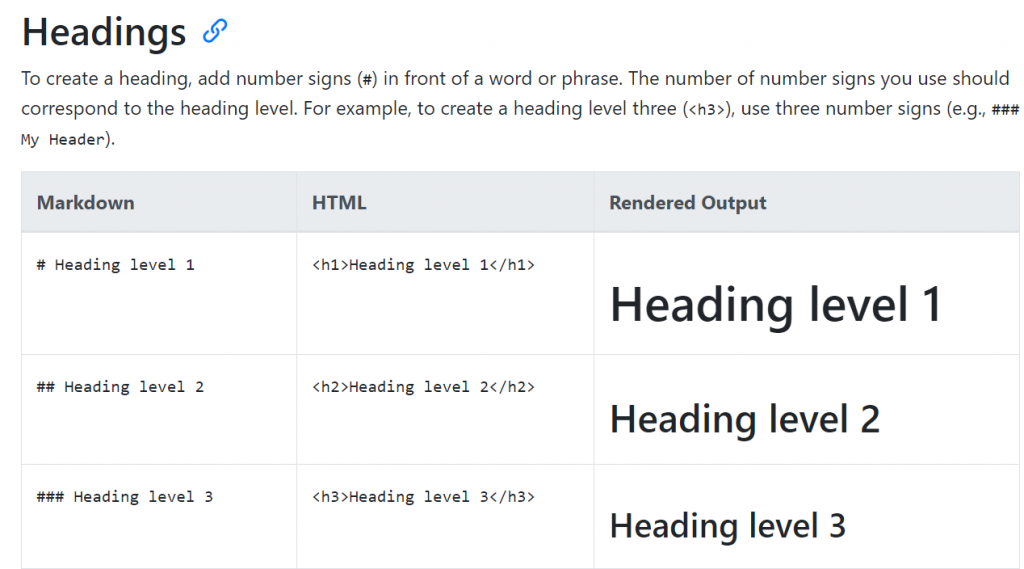Bridging The Gap Between Writers And Content Uploaders
A good writer doesn’t automatically mean a fully-fleshed content machine.
Some may be crazy good reviewers… but not that much of a copywriter to write your article’s description.
Some may be amazing with breaking up data into digestible long-form pieces… but won’t know enough about your CMS to properly upload their latest piece.
It’s understandable.
But that creates a gap between the person writing the content, and the person that’s supposed to upload it.
So let’s bridge that gap.
How Do You Upload Content?
Ok, we know you know. If you’re here, you’ve probably been uploading content for a while. If you think you have the right recipe, just skip this part. For the rest of us, I think it’s important to remember what needs to be taken into account.
So first, you have to worry about…
Formatting
If you use WordPress, most of the job is done after a quick set-up in the Customize tab.

But depending on the document editing software used (Microsoft Office, gDrive, etc) bullet lists and images might not always translate into clean paragraphs.

In that case, the content uploader will have to move around and remove some spaces.
It doesn’t sound like a lot, but if you’re uploading 30 articles at a time, it might take a while. Not to mention, if you’re not using WordPress, who knows what compatibility issues may arise.
And that’s the first gap between writers and uploaders.
But that’s not all.
Multimedia Content
Depending on your site’s formatting, you’ll have different naming and posting conventions for multimedia content.
Even quotes or code parts might fall in this category.

If your writer isn’t privy to that information, you’ll have to work a lot when uploading content.

And that’s another area where your writer and content uploader might not see eye to eye. While for the writer, it would only take a few seconds to name a screenshot accordingly, the content uploader will have to plow through 30 or more images and rename all of them.
That’s time lost.
SEO
No matter where you’re set-up, meta-descriptions, target keywords and links will have to be set-up before you publish a new piece.
And if your writers didn’t sign up for that, or if they just don’t know how to do it, uploading will take considerably longer.
Especially since uploaders usually give the piece…
One Last Read
Yes, this article is about the person uploading an article.
And you may have different people hired as editors, so in theory, uploading should have no editing involved.
But that’s not a norm. Quite the contrary.
If you’re a one-man show for the most part, or if you can’t afford paying a person to upload and schedule your content, you’re wearing more hats.
And so you add all of that time spent on formatting, SEO and multimedia content to the actual editing of the article.
Which includes that one last read before hitting publish.
And if you’re publishing long-form content, all that process might take a while.
So The Gap…
Is real.
If you don’t have a well-oiled editorial machine, those problems will arise and inconvenience your team.
Luckily, you can bridge that gap.
Bridging The Gap
Can only be done gradually.
If you want to change your SEO requirements for writers, ease it into your briefs after you discuss it with them.

And definitely use tools to help make the change easier.
Other than that, here we go.
Option #1 – Have Your Writers Upload The Content
Seems pretty obvious, but that doesn’t mean it’s easy. Especially if you work with low-skilled, low-paid writers that are just starting out.
Plus, you might not want to give new team members control over your CMS.
So if this isn’t for you, skip to Option 2.
But if you are considering letting your writers upload the content they produce, you need to take it slow. Don’t just pass on the login credentials and hope for the best.
Start out by having them assume more responsibilities. Let them take charge of the SEO research for their articles for example.
Speaking of, that shouldn’t be hard if you use ahrefs and the Surfer Content Editor. It’s what we use, and it works wonders in bridging the gap between writers and content uploaders.

Take the same stance with formatting, writing short descriptions for posts, or even adding multimedia content.
Have your writers come up with the meta-description for the articles they’re writing.
In the short run, this will make it easier for content uploaders to do their job.
In the long run, this will teach writers everything they need to upload content themselves.
However, regardless of how experienced your writers are, or how well they did in the “trial”, try to hold their hand during the first one or two pieces of content uploaded. This might even be a good time to upskill them overall.
If you need some help training your writers, check out Noupe’s tips for generating content.
Oh and, definitely show them how to use your CMS beforehand.
Option #2 Optimize The Workflow
If you don’t feel comfortable conceding a lot of control to your writers, you can try the first step of Option 1: have them assume more responsibilities over time.
But there are plenty of ways to do that.
So let’s talk about each aspect of content uploading.
Better Formatting
Depending on your CMS and your writer’s document editing software, you might have different needs with formatting.
If you don’t want to stop and look for minute details, you can have your writers use Markdown.

It’s an adapted type of HTML writing, and it will get pasted the same everywhere. If you want to go that route, we recommend using Typora to create the content in a decent UX.

And we also advise some patience. It will take a while for your writers to get accustomed to the tool.
Better Multimedia Content
If you create custom multimedia content – like images with a specific width and color pallete, or tables formatted in a certain way – just show your writers how to do that.
You don’t need to be a designer to use screenshoting software.
And beautiful tables aren’t hard to create.

On top, if you have a naming convention, put it in the briefs of articles.
Regardless of how well your writers will adapt to new changes, this is bound to bridge the gap at least a little bit.
Lastly, make sure you read our tutorial on how to use design to amplify your brand’s content marketing.
Better SEO
At Authority Hacker, we trust our writers enough to let them do their own LSI research, and use the target keyword as recommended.
But they don’t have a ton of work to do..
We plan our content strategy with ahrefs, and then we use the Surfer Content Editor to make sure our writers can implement the right keywords in their work.
It works wonders to bridge the gap, and its data is reliable too.
Smoother Editing
Good writers know how to edit their own work.
If that’s not true for your writers, you might want to focus on improving your editorial process. Buy a Grammarly extension to help your writers with the odd grammar mistake, and teach them how to write better copy.
All of these will help bridge the gap between writers and content uploaders.
And For Our Final Tip
Be proactive, pay attention to your team, and adapt.
We explored some solutions, but to truly breach the gap, you need to adapt to your team’s needs. If you’re running an affiliate website for example, you might need writers to be able to make room for affiliate links naturally.
If you’re looking for inspiration, we actually have a giant list of some of the most successful affiliate websites examples.
Talk to your content uploaders. Talk to your writers. Take the time to understand where the gap is coming from.
Know that and you’ll be able to adapt all of this to your site.
Photo by Austin Distel on Unsplash
